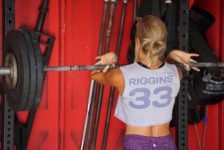
As we’ve discussed and will continue to discuss, the holy grail of learning environments called deliberate practice is the pinnacle learning environment. We now know that deliberate practice trumps all forms of practice and is, by definition, the best way to maximize training adaptation from classical violin to golf. To review, there are three key elements to create a learning environment for deliberate practice:
- A clear stretch goal.
- Immediate, informative feedback.
- Repetition.
This creates a stressful, potent learning environment that invites the student to reach slightly past their comfort zone. Furthermore, the immediate informative feedback allows for more adjustments at a faster rate than traditional practice strategies. What we haven’t talked about yet is just as important as these three criteria. This x-factor is what the godfather of deliberate practice, Anders Ericsson, calls a mental representation. All masters of craft have a very accurate depiction of their ideal “forms” for their activity. This mental representation provides the basis for the three aforementioned criteria to work.
After all, how would you improve your running if you didn’t have a clear image as to what ideal running looked like? What about an aspiring ballerina who doesn’t have a clear image of what a proper turn out looks like in her mind? She has a stunted chance at hitting a target she cannot see.
In any undertaking you might delve into, it pays to see the ideal expression of it. It’s with this form that you will get meaningful feedback between your inevitable deviations from the standard. Your best chance, then, at that muscle up or that full clean and jerk will be closely related to your ability to understand how it looks and feels to do one.
Logan Gelbrich
@functionalcoach
11/20/17 WOD
Back Squat 6-8 reps @30X1
-Rest 3 min-
Then, complete 8 rounds of:
:10 Max Cal Assault Bike Sprint
-Rest 2 min-.

